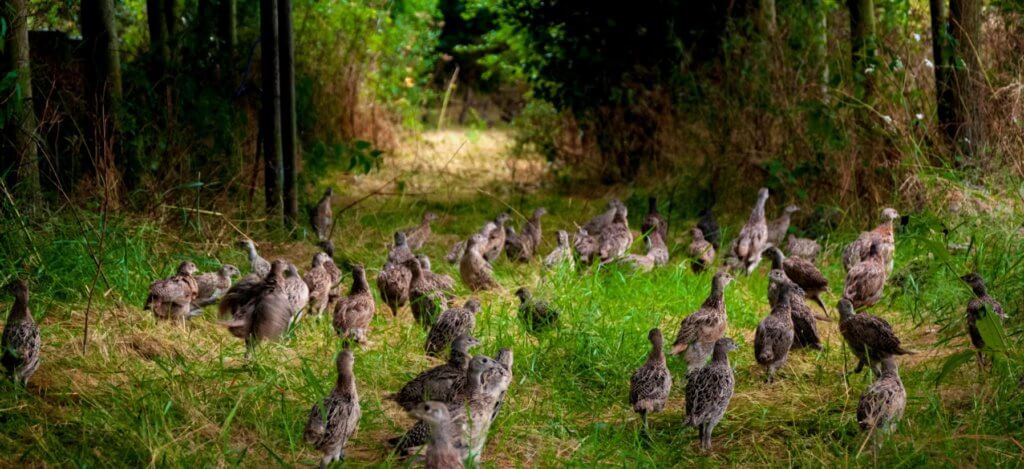
Wild Justice’s legal challenge of gamebird releases has forced Defra to agree to a review of this activity and its impacts on sites of nature conservation importance (Special Areas of Conservation and Special Protection Areas for birds).
It is fairly important to note that this review would not apply only to gamebird releases inside the boundaries of SPAs and SACs (as some shooters with little attention to detail (or perhaps little respect for the facts) have contended) but any releases of gamebirds that affect SPAs and SACs so gamebird releases ‘down the road’ or ‘across the valley’ or ‘on the other side of the hill’ are all potentially subject to the legal requirement to assess impacts. How Defra deals with this issue will be important for them to avoid further legal challenges and to get the right answer!
So, if gamebird releases affect the numbers of predators such as Red Foxes for example, then one might well have to take into account how much the cumulative impact of gamebird releases into a local area would affect Red Fox numbers and how far Red Foxes might move as a result and what impact that might have on Curlew nesting success (as a random example). There’s quite a lot of biology in that. And if a site is designated partly for its breeding or wintering bird of prey numbers, and gamebird releases lead to more lead being available to be ingested by raptors for one reason or another then that too should be considerd and assessed. And there seem to me to be a host of other such impacts.
Wild Justice’s brief response to Defra can be seen here on the Wild Justice blog.
[registration_form]
I see the letter is signed ‘Leigh Day’. Didn’t realise a firm of solicitors could ‘sign’ a letter as a corporate entity, rather than with an actual person’s name. That an individual signs is just a convention I suppose.
I think it is also worth pointing out that the assessment is not restricted to national boundaries. So there may be pathways connecting a pheasant shoot in southern England, and a French or Belgian European Protected Site (for example).
And it is unclear in my mind whether the importation of millions of birds from the continent to the UK falls within the consideration process as this is a constituent part of the process of releasing the birds. After all, you cannot release millions of birds in to the UK countryside without first importing them.
The low-hanging fruit for this is to use online databases such as Bird Track to see if there are increases in numbers of game birds in Special Areas of Conservation and Special Protection Areas that coincide with releases nearby. It’s not particularly scientific but it might be a good way to start.
It’s going to take quite a bit of work to determine the zone of influence, from game bird release – and activity? – around each European Site.
The notorious 5km zone around European Heathland sites in Surrey and Hampshire (which gave rise to Gove’s infamous “EU rules to stop cats chasing birds” speech) was based on a wide range of different research findings, if I recall correctly, from here and abroad.
In the case of the 5km zone, the impact being considered – new housing development – had to be stopped in that 5km zone, across the Thames Basin, while NE considered whether the impact could be mitigated: and if so how it would be done.
Is NE planning to introduce a moratorium on game bird releases around European Sites, while it works out whether their impact can be mitigated. And if not, why not?
Miles – I can imagine that someone might ask them that soon.
that would be useful.
Of course the weight of the EC and ultimately the EUCJ sat behind those asking for NE to consider the effect of all that extra housing back in 2005/06. What equivalent pressure can be brought to bear now?
Miles – indeed. It all depends…
One of my local birding patches, a SSSI called Ravensroost Wood in north Wiltshire, is always swamped with pheasants in the autumn, as soon as the surrounding local shoots release them. Perhaps they know it is a refuge!
To my mind the likely significant effect could operate at a regional scale. For example, the biomass of game birds across a whole region, such as south-east England, could affect the territory size of various predators across that whole region, and thereby affect predator pressure at any European site (or within any European site supporting habitat) within that region. I think there’s good science to indicate, for example, that fox territory size relates to prey availability. More prey, smaller territories. Smaller territories, more within a given area. And I’m pretty sure that group size of social animals – e.g. fox and badger – relates to prey availability, with larger social groups within a given territory with higher prey availability. All this points to greater predator pressure both to ground nesting birds (stone curlew, woodlark, nightjar, black-tailed godwit etc) and wintering assemblages.
I strongly suspect some sort of moratorium on further releases is required pending confirmation that a) releases aren’t having an adverse effect on integrity (Article 6(3) of the Habs Directive) but, also, that appropriate steps are being taken by the UK government to avoid deterioration of any European sites (Article 6(2)).